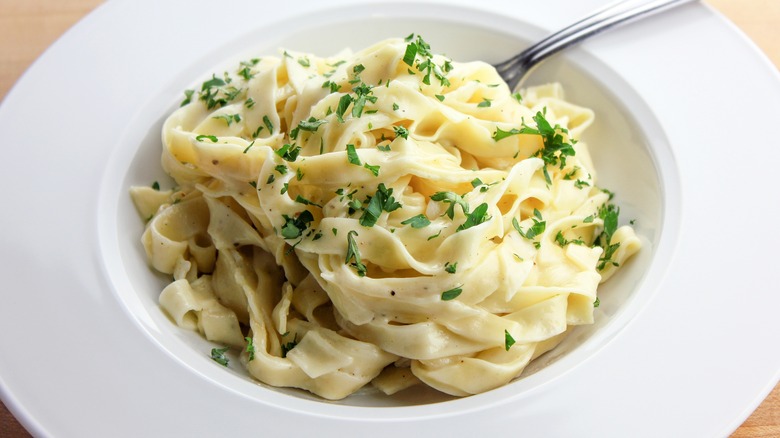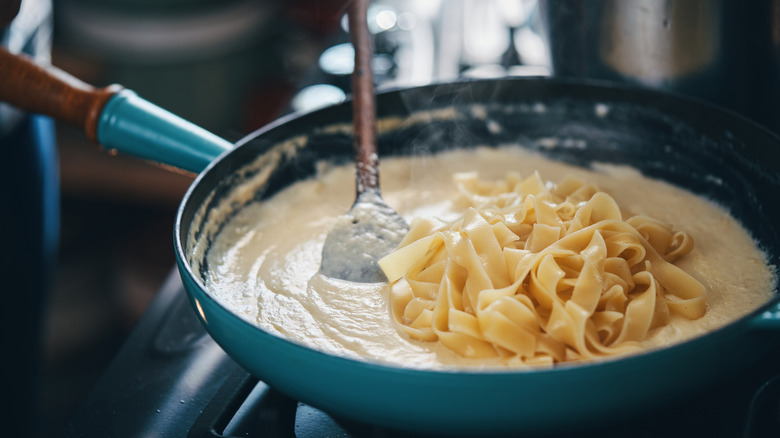For The Creamiest Alfredo Sauce Ever, Look To Your Bowl First
Preparing your own homemade alfredo sauce may seem easy but if you're not careful, this finicky dish can easily go south. The most disappointing thing is watching your once-silky sauce turn into a thick, sticky mess. You know the feeling: you whip up a batch of creamy sauce, pour it over your pasta, and in what seems like seconds, it's congealed into a clumpy mass. The good news is there's a way to avoid it. The idea is simple: if you want the creamiest alfredo sauce, warm the bowl before you serve the dish.
This is a game-changer because alfredo sauce is sensitive to temperature changes. As it cools, it begins to thicken and solidify. When you pour hot sauce into a cold bowl, the rapid drop in temperature can cause the fats in the sauce to congeal, leading to that dreaded clumpiness. By warming the serving bowls, you're helping to maintain the sauce's creamy consistency, giving it a better chance to stay smooth.
So, how do you warm your bowls? You have a couple of options. You can fill each one with hot water for a few minutes, then drain them just before serving. Alternatively, if your oven is on, you can place the bowls inside for a minute or two at the lowest setting — just make sure they're not too hot to handle. Either way, the goal is to ensure the bowls are warm, not scorching, when you add your sauce.
Other tips for preventing congealing
While warming the bowl is a key step in keeping alfredo sauce creamy, there are other tips to consider that can help prevent and fix a broken sauce. The first one is to maintain a gentle heat while cooking. Alfredo sauce can separate if it gets too hot, leading to a greasy mess. To avoid this, cook the sauce on low heat and stir constantly until the cheese and butter are melted and well combined. Avoid letting it boil, as this can cause the fats to separate.
Another helpful tip is to add a liquid if the sauce starts to thicken too much. A splash of pasta cooking water, cream, or milk can do the trick. The added liquid is a simple fix for an overly thick sauce helping maintain its fluid consistency. This is particularly useful if the sauce has been sitting for a while.
If your alfredo sauce has already started to congeal, blending or whisking vigorously can help bring it back to life. A hand whisk or immersion blender works wonders in breaking up clumps and returning the sauce to a creamy state. This technique can be especially useful if you notice the sauce separating during cooking. By combining these tips with the technique of warming your serving bowl, you'll find that your alfredo sauce stays creamy and delicious throughout the meal.

